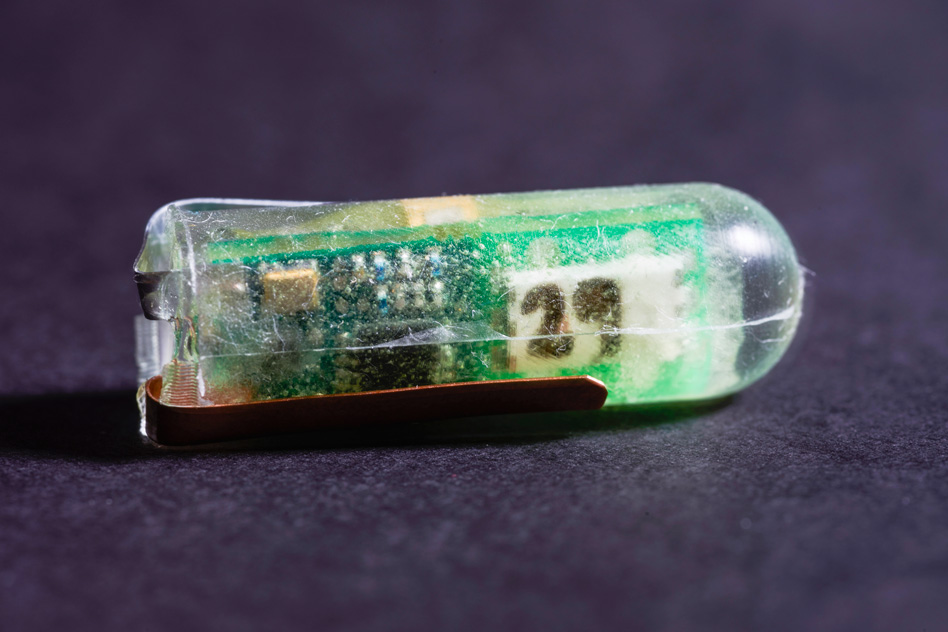Move over, wearables. Soon, ingestibles that run on the power of a grumbling gut may be the go-to health-tracking devices.
New wireless gadgets could deliver drugs and continuously measure temperature, all while harvesting energy from churning, acidic gut fluids, researchers report this week in Nature Biomedical Engineering. Prototypes have successfully made their way through the bowels of pigs, and the design will need tweaking for human use. But the findings suggest that next-generation ingestible devices will be able to safely harvest energy for a slew of health tracking and monitoring purposes—potentially even for extended periods of time.
Consumable contraptions have already proved useful for video capture and health monitoring. They measure things like breathing, temperature, pH, drug delivery, heart rate, and pressure. But most gulp-able gadgets still require an old-fashioned battery, which can cause life-threatening burns and injuries in living tissue.
To get around that problem, MIT researchers and colleagues turned to the “lemon battery” for inspiration. In the classic science-class demonstration, a zinc element, like a galvanized nail, and a copper penny act as electrodes when stuck in a lemon. The lemon’s citric acid shuttles a small current between them.
Swapping citric acid for gut acid, the researchers created their own tiny Zn-Cu cells using cheap, commercially available, bio-compatible materials. The first device was for continuous, wireless temperature monitoring. It consisted of a microcontroller that included a radio frequency transmitter and a temperature sensor (among other things) and an "energy-harvesting boost-converter integrated circuit," which "took energy directly from the Zn–Cu cell at low voltage (0.1–0.2 V) and boosted it onto a temporary storage capacitor at a higher voltage (2.2–3.3 V) for use by the circuits.”


 Loading comments...
Loading comments...
